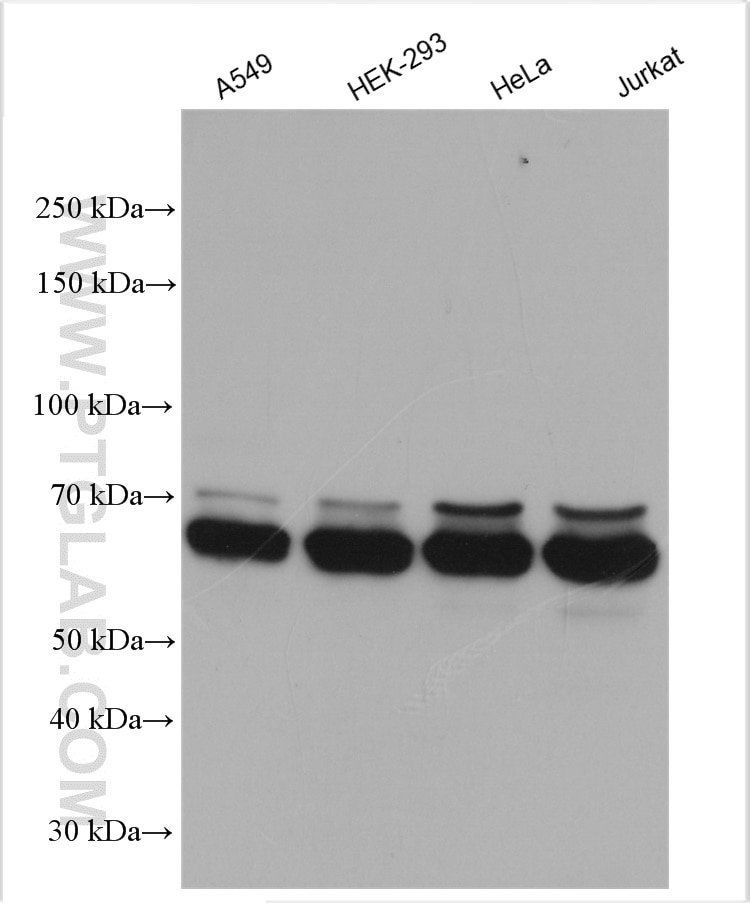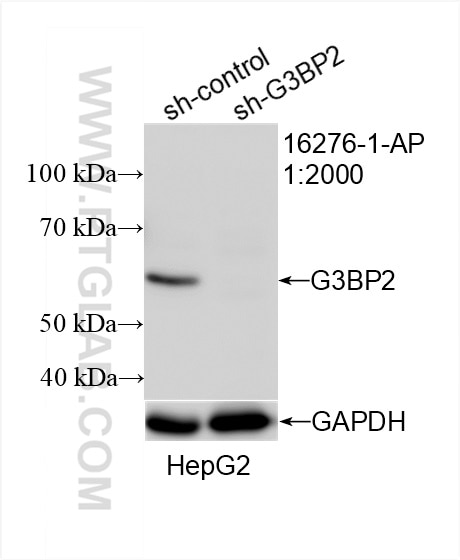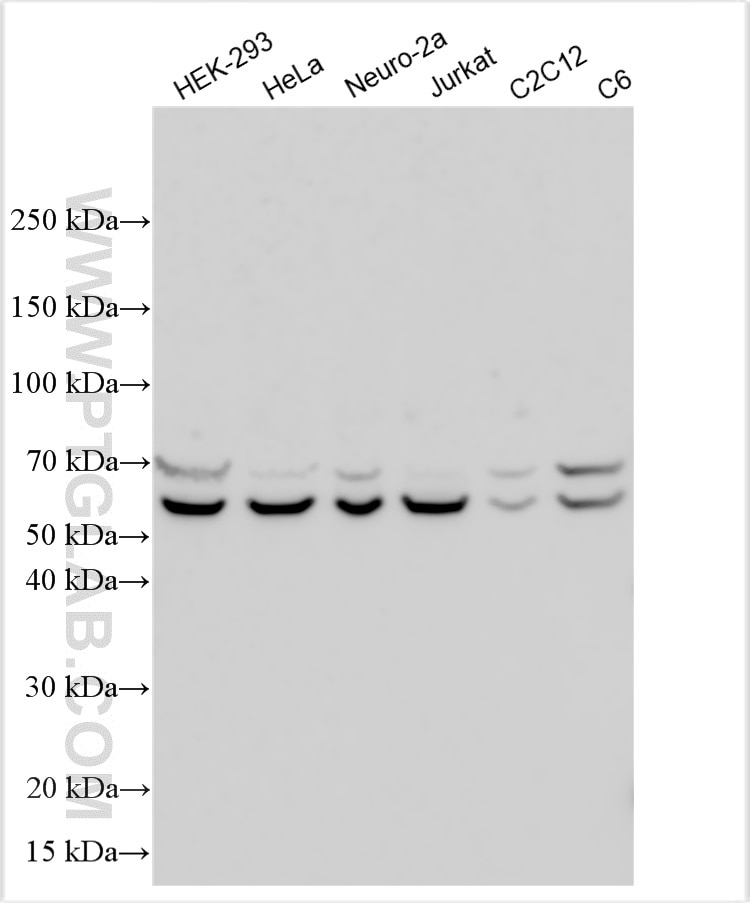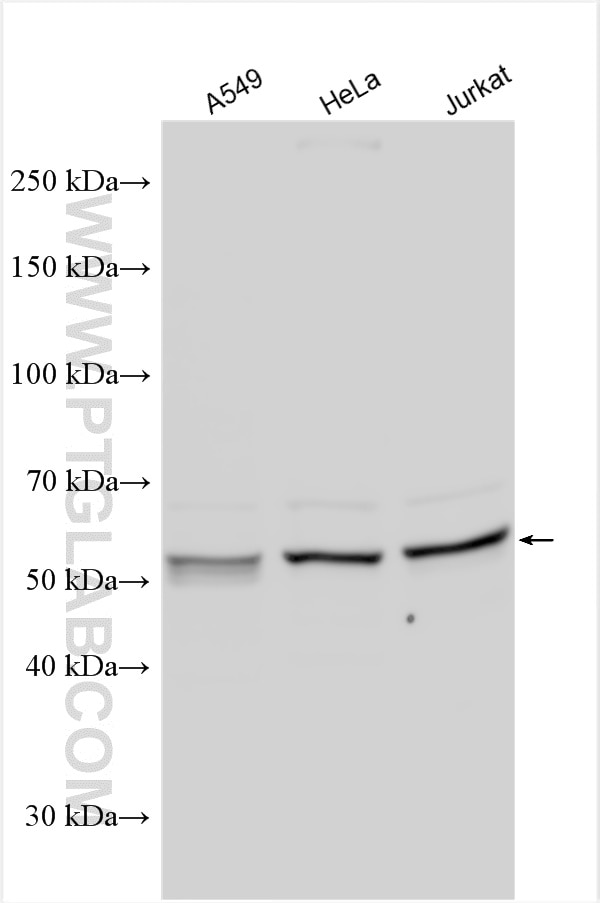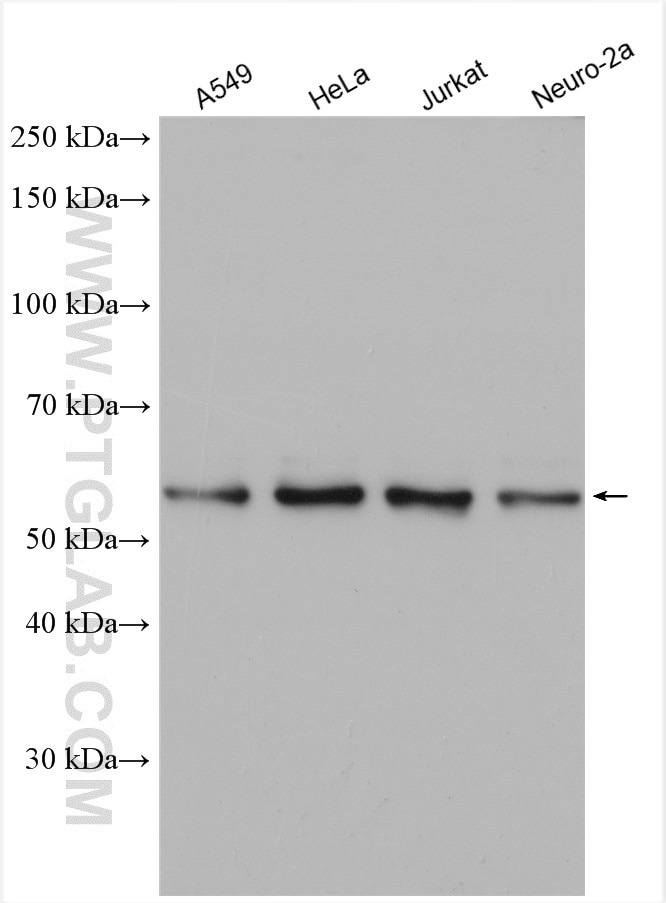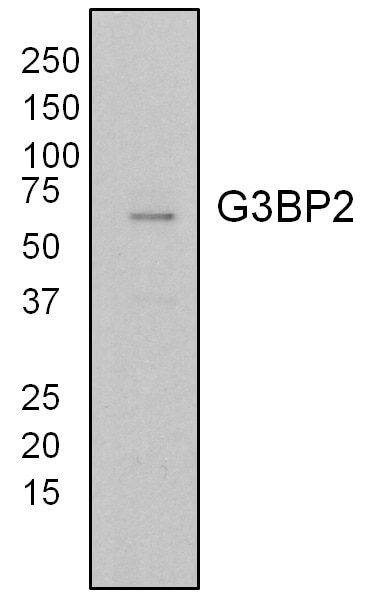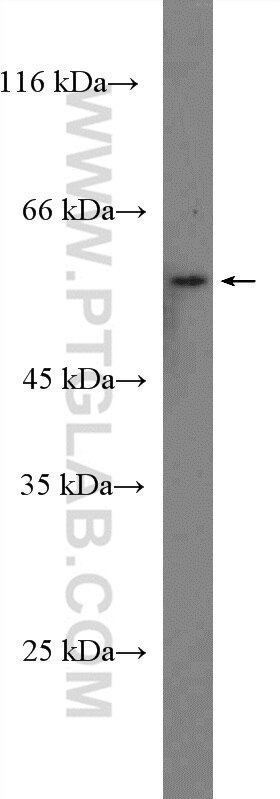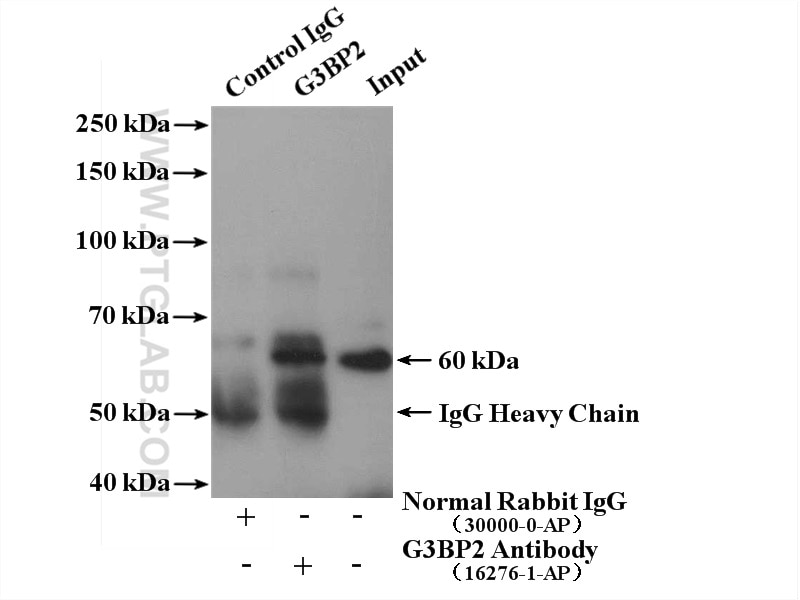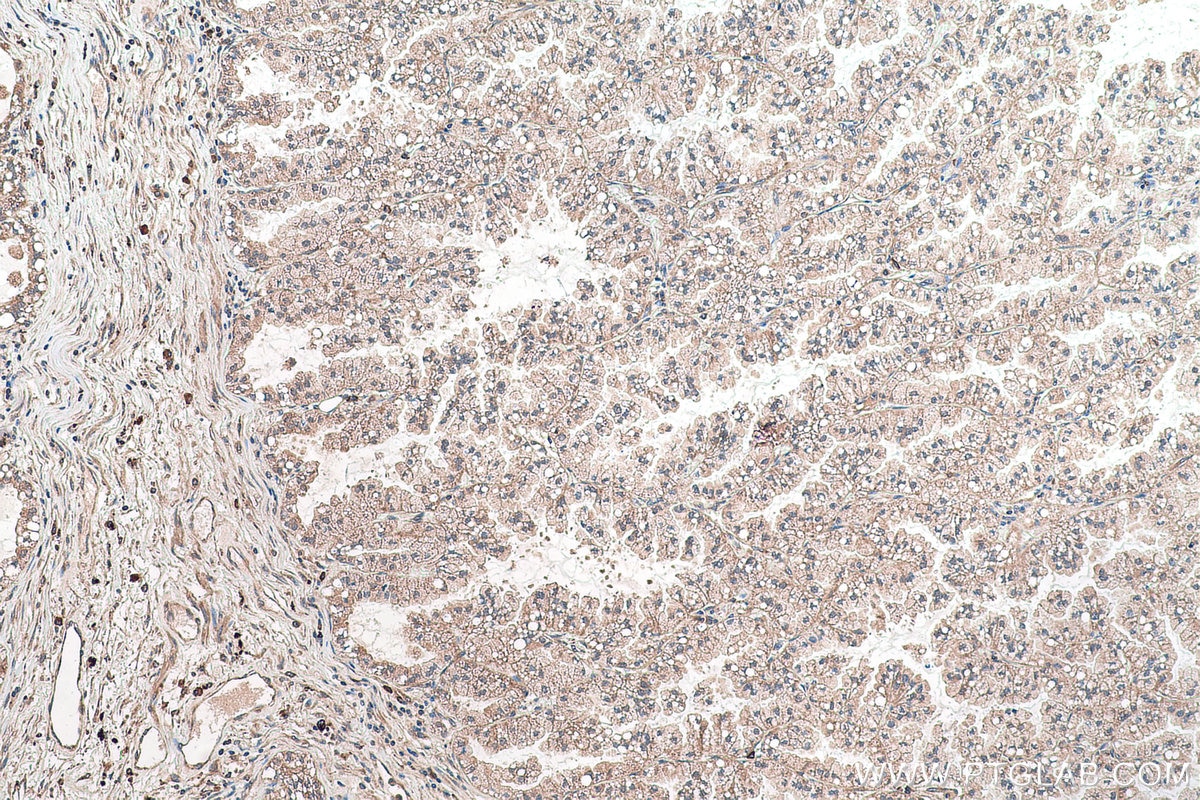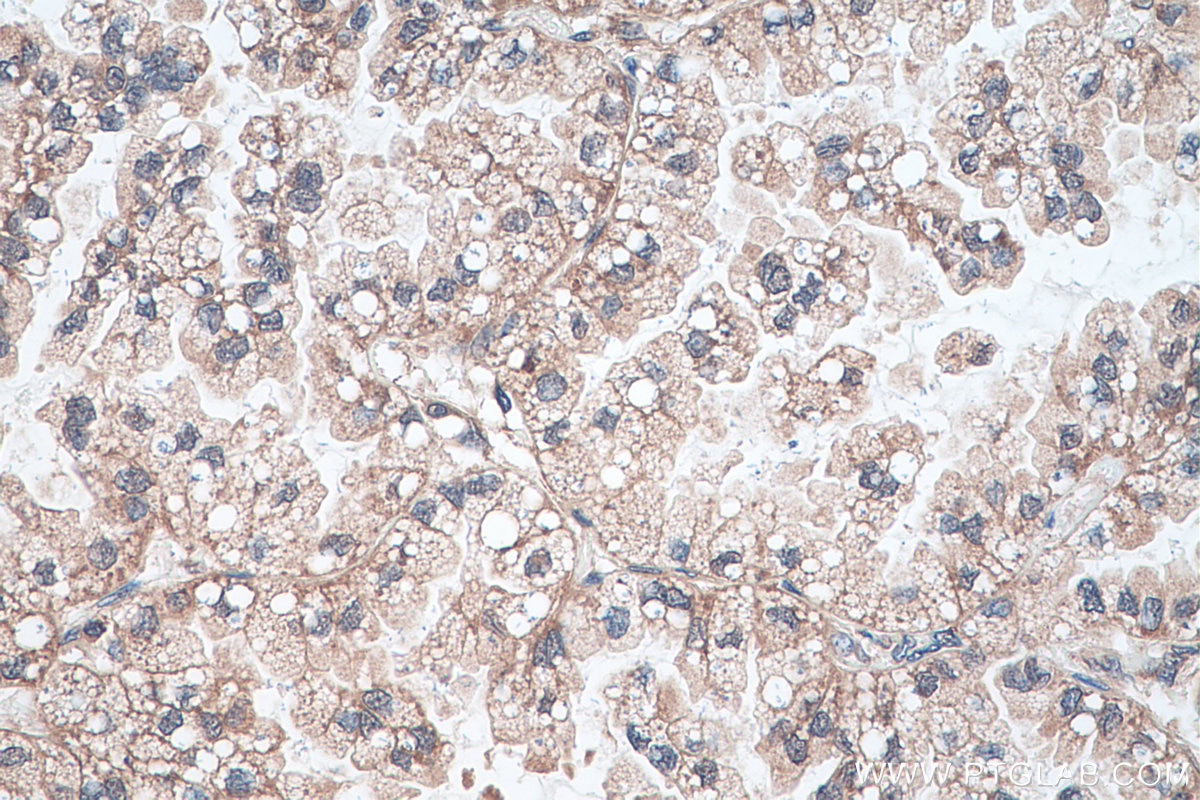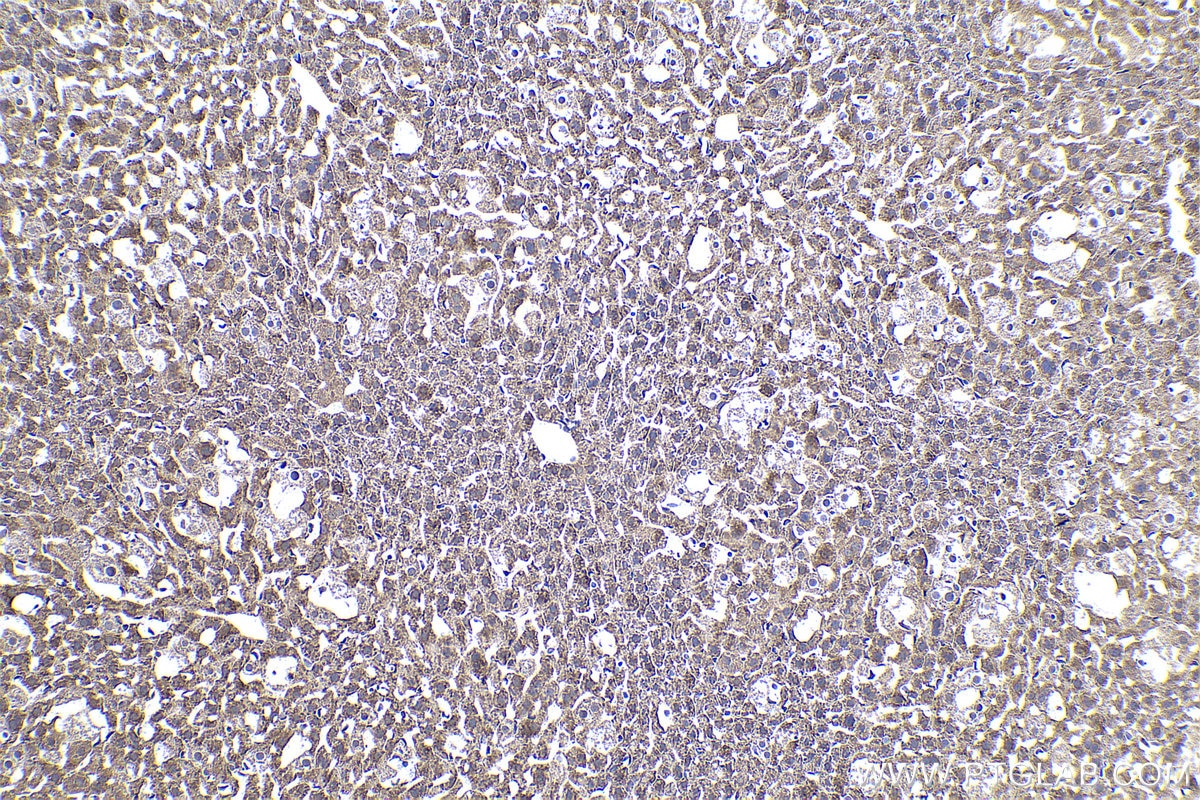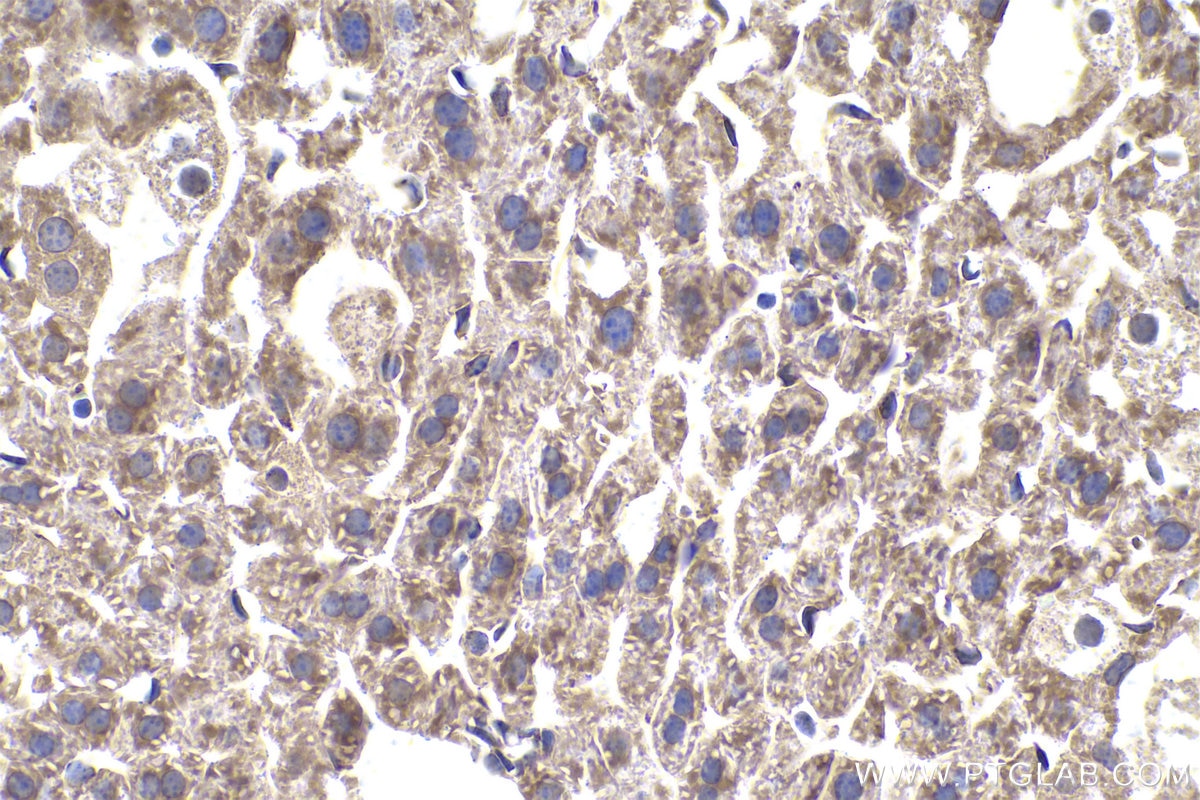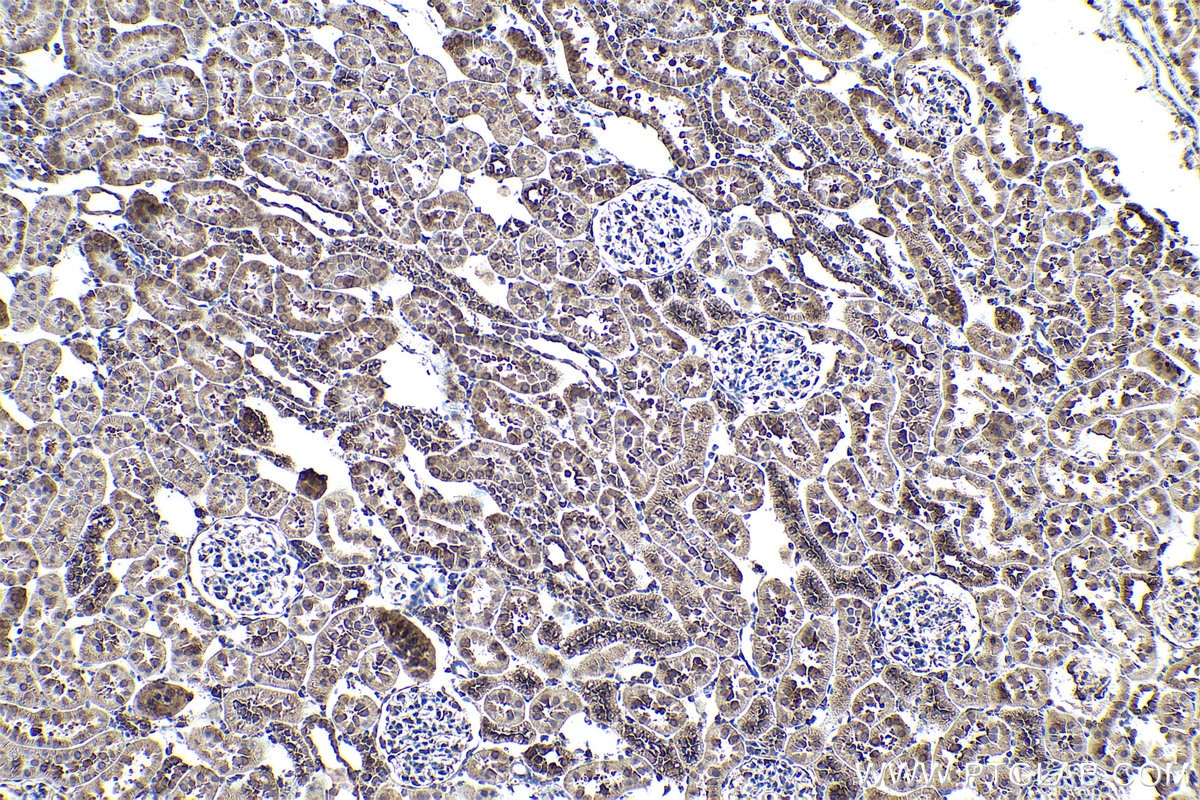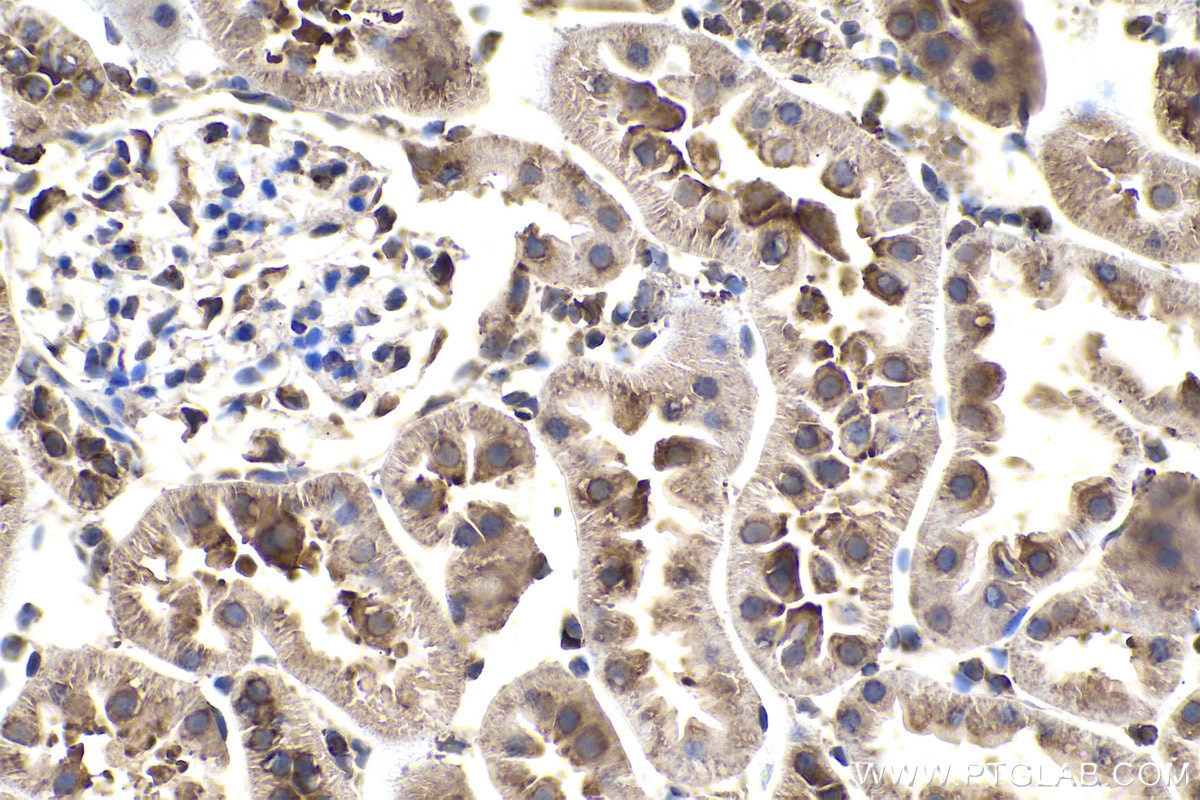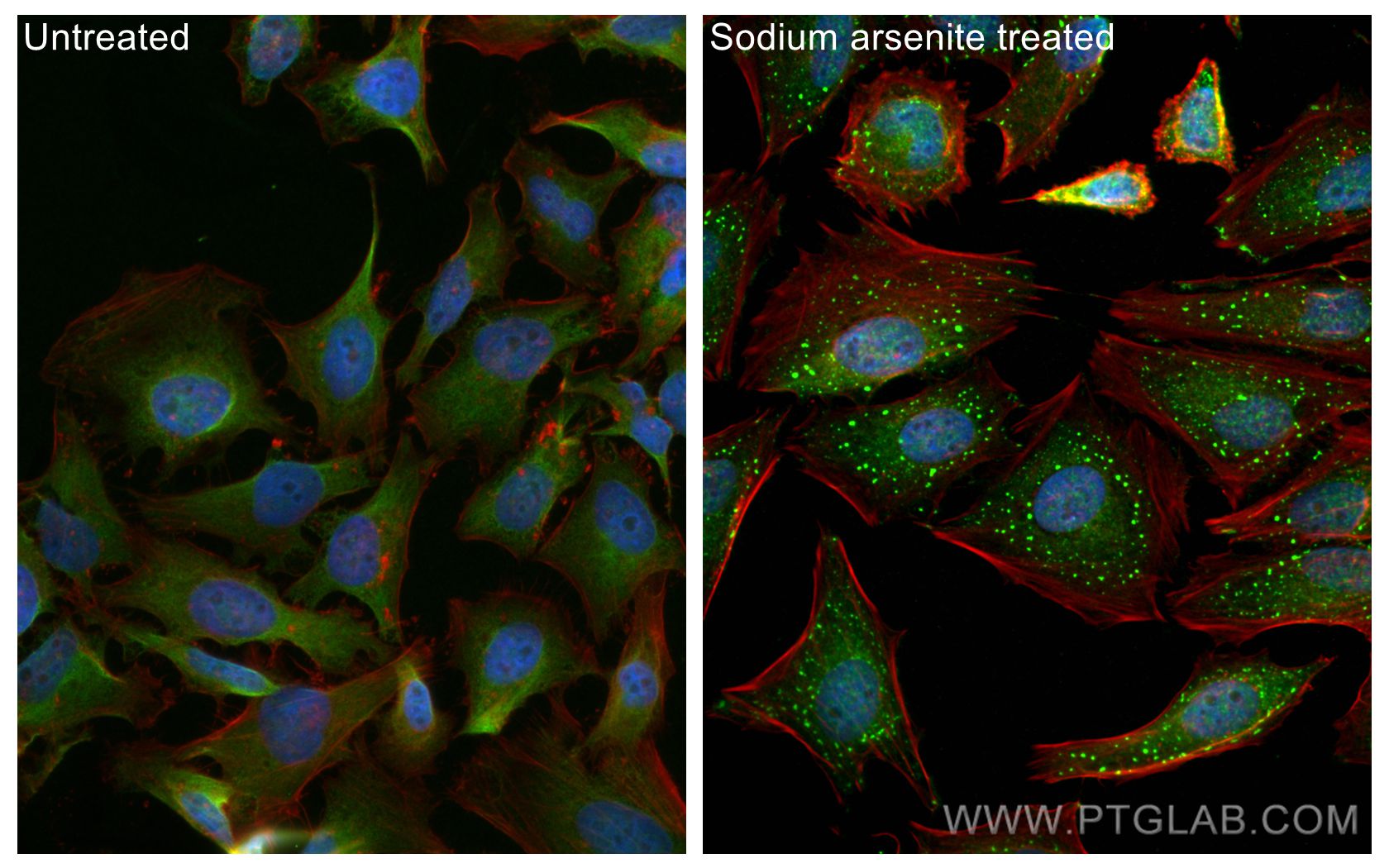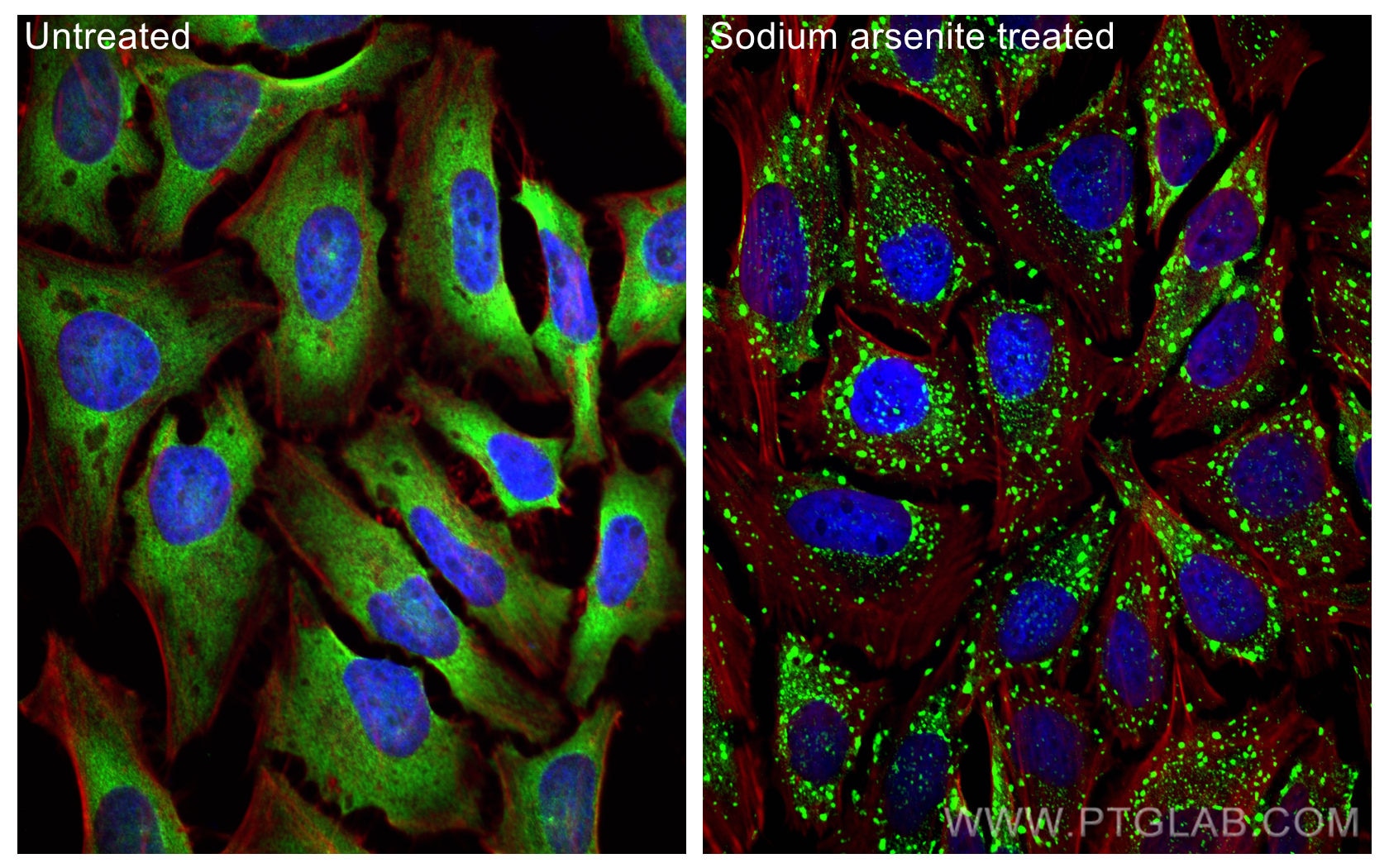- Phare
- Validé par KD/KO
Anticorps Polyclonal de lapin anti-G3BP2
G3BP2 Polyclonal Antibody for WB, IHC, IF/ICC, IP, ELISA
Hôte / Isotype
Lapin / IgG
Réactivité testée
Humain, rat, souris
Applications
WB, IHC, IF/ICC, IP, CoIP, RIP, ELISA
Conjugaison
Non conjugué
N° de cat : 16276-1-AP
Synonymes
Galerie de données de validation
Applications testées
| Résultats positifs en WB | cellules A549, cellules C2C12, cellules C6, cellules HEK-293, cellules HeLa, cellules HepG2, cellules Jurkat, cellules MCF-7, cellules Neuro-2a, cellules T47D |
| Résultats positifs en IP | cellules HeLa, |
| Résultats positifs en IHC | tissu de cancer du poumon humain, tissu hépatique de souris, tissu rénal de rat il est suggéré de démasquer l'antigène avec un tampon de TE buffer pH 9.0; (*) À défaut, 'le démasquage de l'antigène peut être 'effectué avec un tampon citrate pH 6,0. |
| Résultats positifs en IF/ICC | sodium arsenite treated HeLa cells, |
Dilution recommandée
| Application | Dilution |
|---|---|
| Western Blot (WB) | WB : 1:2000-1:16000 |
| Immunoprécipitation (IP) | IP : 0.5-4.0 ug for 1.0-3.0 mg of total protein lysate |
| Immunohistochimie (IHC) | IHC : 1:250-1:1000 |
| Immunofluorescence (IF)/ICC | IF/ICC : 1:50-1:500 |
| It is recommended that this reagent should be titrated in each testing system to obtain optimal results. | |
| Sample-dependent, check data in validation data gallery | |
Informations sur le produit
16276-1-AP cible G3BP2 dans les applications de WB, IHC, IF/ICC, IP, CoIP, RIP, ELISA et montre une réactivité avec des échantillons Humain, rat, souris
| Réactivité | Humain, rat, souris |
| Réactivité citée | Humain, souris |
| Hôte / Isotype | Lapin / IgG |
| Clonalité | Polyclonal |
| Type | Anticorps |
| Immunogène | G3BP2 Protéine recombinante Ag9355 |
| Nom complet | GTPase activating protein (SH3 domain) binding protein 2 |
| Masse moléculaire calculée | 482aa,54 kDa; 449aa,51 kDa |
| Poids moléculaire observé | 65-70 kDa |
| Numéro d’acquisition GenBank | BC011731 |
| Symbole du gène | G3BP2 |
| Identification du gène (NCBI) | 9908 |
| Conjugaison | Non conjugué |
| Forme | Liquide |
| Méthode de purification | Purification par affinité contre l'antigène |
| Tampon de stockage | PBS with 0.02% sodium azide and 50% glycerol |
| Conditions de stockage | Stocker à -20°C. Stable pendant un an après l'expédition. L'aliquotage n'est pas nécessaire pour le stockage à -20oC Les 20ul contiennent 0,1% de BSA. |
Informations générales
Stress granules (SGs) are cytoplasmic mRNA-protein condensates formed in response to cellular stressors, such as oxidative stress, ultraviolet radiation, and viral infection (1). The Ras-GTPase-activating protein-binding proteins (G3BPs), consisting of G3BP1 and G3BP2, are key nucleating factors essential for SG formation. They function to protect RNAs from harmful conditions. G3BP2 is mainly distributed in the cytoplasm and participates in the formation of stress granules, cell differentiation, proliferation, and signal transduction. Accumulating evidence has demonstrated that aberrant expression of G3BP2 contributes to cancer initiation and progression, such as high expression of G3BP2 increasing cell stemness, metastasis and chemoresistance in breast cancer.
Protocole
| Product Specific Protocols | |
|---|---|
| WB protocol for G3BP2 antibody 16276-1-AP | Download protocol |
| IHC protocol for G3BP2 antibody 16276-1-AP | Download protocol |
| IF protocol for G3BP2 antibody 16276-1-AP | Download protocol |
| IP protocol for G3BP2 antibody 16276-1-AP | Download protocol |
| Standard Protocols | |
|---|---|
| Click here to view our Standard Protocols |
Publications
| Species | Application | Title |
|---|---|---|
Cell Diverse CMT2 neuropathies are linked to aberrant G3BP interactions in stress granules | ||
Cell G3BP1 Is a Tunable Switch that Triggers Phase Separation to Assemble Stress Granules. | ||
Cell Rep hnRNPA2B1 represses the disassembly of arsenite-induced stress granules and is essential for male fertility | ||
Oncogene HDAC6-G3BP2 promotes lysosomal-TSC2 and suppresses mTORC1 under ETV4 targeting-induced low-lactate stress in non-small cell lung cancer
| ||
Oncogene RIOK1 mediates p53 degradation and radioresistance in colorectal cancer through phosphorylation of G3BP2.
| ||
Mol Cancer Invasion-related circular RNA circFNDC3B inhibits bladder cancer progression through the miR-1178-3p/G3BP2/SRC/FAK axis.
|
Avis
The reviews below have been submitted by verified Proteintech customers who received an incentive for providing their feedback.
FH Karine (Verified Customer) (09-22-2022) | Proteins were extracted from H69 cells using Laemmli lysis buffer (12.5mM Na2HPO4, 15% glycerol, 3% sodium dodecyl sulfate [SDS]). The protein concentration was measured with the DC Protein Assay (BIO-RAD) and 30μg of total proteins were loaded onto 12% SDS- polyacrylamide gels for electrophoresis and transferred onto polyvinylidene difluoride membranes (Millipore). After 1h of blocking with 5% bovine serum albumin prepared in Phosphate-Buffered Saline (PBS)-0.1% Tween-20 buffer, the blots were incubated overnight at 4°C with the indicated antibody (dilution 1/1000). After 1h of incubation with a horseradish peroxidase-conjugated secondary antibody (1:5,000, Promega), protein bands were visualized using an enhanced chemiluminescence detection kit (Millipore) and and the Syngene Pxi4 imaging system (Ozyme).
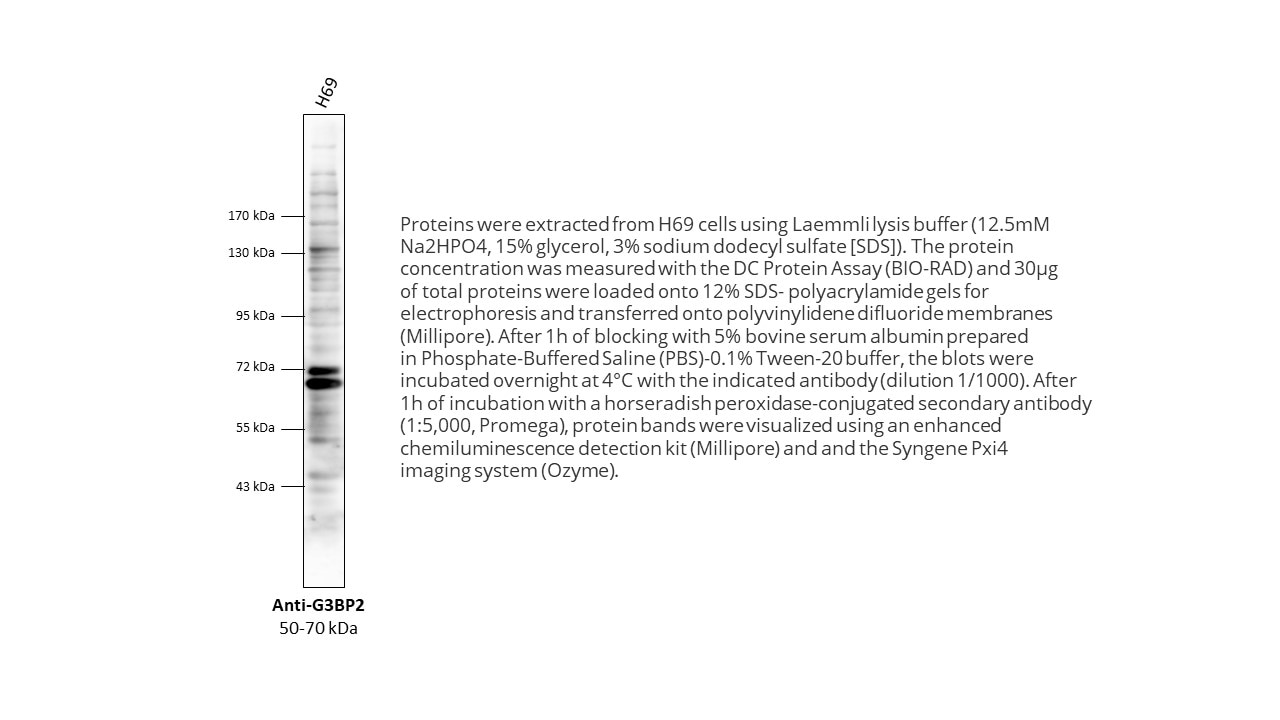 |
